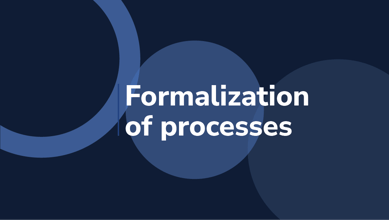Marketing
Everything you need to know about the marketing area of a company
Introduction
What will you find on this page?
What is Marketing?
TABLE OF CONTENTS
Related concepts
Both concepts originated simultaneously in 2005 to name the inbound marketing methodology and to differentiate it from the traditional marketing methods (outbound marketing).
Inbound marketing combines non-intrusive marketing and advertising techniques with the aim of attracting customers by offering them value-added content and relevant experiences. On the other hand, outbound marketing is the group of marketing actions that aim at attracting customers but with direct and one-way methods.
- Inbound marketing: focuses on both users and potential customers. It tries to catch their attention by offering value-added content. It attracts customers without stalking them through digital media (websites, social media, search engines, etc.) trying to get in touch with them. This way, you focus on the needs of the future customer and try to satisfy them. You reach a more qualified public and you do not underestimate your potential customers since you acknowledge that they can research on their own and make their own decisions.
- Outbound marketing: focuses on both the brand and the product by showing its characteristics and advantages. It is invasive since it interrupts customers by providing information they did not ask for only for commercial purposes. It uses traditional methods such as radio, television, press, and e-mail to get to the customer. Its characteristics are one-way and impersonal communication since users cannot exchange views with their interlocutor because he/she is not talking to them but to the general public.
Marketing area members
Defining the people who are in charge of these functions is not that simple so we often ask ourselves "what does a marketing team do?." As it is widely known, this will always depend on the way in which each company needs to work. The members who stand out the most in this area are organized as follows:
-
Chief Marketing Officer-CMO (Marketing manager)
The person in charge of coordinating the team members and of developing the strategic vision of the team according to the goals of the company. His/her main tasks, together with the team, include managing and developing every activity related to the attraction of prospects, brand promotion, events, PR, among others.
At the same time, he/she gets together regularly with the managers and the rest of the team to analyze the business status and how marketing strategies are contributing to the achievement of the goals of the company.
-
Social media manager
This person is in charge of the correct profile administration of the social media of the company. Besides, he/she develops strategies that support the goals of the company throughout the user journey.
-
Strategist and copywriter
This person is in charge of developing all the content that is published on the company's blog. Moreover, he/she works together with the SEO team to establish which topics he/she will deal with in a particular month; he/she also works with the rest of the teams to look for editorial opportunities.
-
SEO Specialist
This person is in charge of the analysis of the whole SEO ecosystem. He/she identifies the organic opportunities for the blog and the search words which the company could use to produce content. He/she mainly manages the growth of the organic presence in the SERP.
-
Automation specialist
This person is in charge of marketing automation: when a lead downloads a content offer, the conversion from lead to MQL, blog notifications, among others. He/she allows the prospects delivery between marketing and sales is done organically and with no friction thanks to a nutrition of leads process accordingly elaborated.
Delve deeper into our
Business Concepts

What is a macro process?

Process structure

Formalization of processes
History and evolution of Marketing
Importance of the marketing area in a company
Marketing: strategies and processes to create value.
Marketing in organisations
What does the Marketing area do?
-
Product
Price
-
Place
-
Promotion
Functions of the marketing area
- Market and competition research.
- Planning and development of marketing strategies.
- Sales promotion.
- Communication.
- Boosting smarketing process.
- Digital advertising.
- Physical advertising.
- Personal sale or special advertising in particular places or media.
-
It attracts the audience: The main goal of the marketing team in smarketing processes is to attract and draw the audience. This can only be achieved by implementing an adequate strategy that makes you stand out from your competitors.
-
It motivates interactions: The marketing team together with the sales team will have to define the buyer persona who is a semi-fictional representation of the target audience and, then, the customers that they want to attract. Moreover, the marketing area produces interesting content focused on a community to which it is directed. It also multiplies digital channels to have more possibilities of attracting customers which is vital to help the sales team.
-
Full-time communication: the marketing team maintains constant communication with users and the audience (visitors, leads, prospects and customers). It creates content, plans and implements different strategies to encourage the conversion from leads to customers.
-
It guides the leads: all marketing content and efforts are directed to communicate to and, mainly, attract potential customers who visit a site and subscribe to receive value material through the use of inbound philosophy. When these leads have been qualified by the marketing team, they will be derived to the sales team who will communicate with them more directly, prioritizing the needs that motivated their visits to the website and reading of the content.
- It continues creating opportunities: this is achieved by keeping on producing value content and publishing it on social media and the blog. It can also be accomplished by optimizing SEO searches by adding the most searched keywords.
Main challenges
- Showing ROI on the marketing action.
- Calculating and assuring a budget that is enough for every campaign.
- Optimizing the website to produce sales.
- Identifying the correct tools for the needs of the company.
- Knowing ecommerce.
- Training the marketing team.
- Managing content for the buyer persona.
- Adapting to the contingencies that the pandemic caused (remote work and home office)
Main issues in the area
Companies have problems such as everybody else does. Something that is very common is that marketing is not on the same page as the sales area because their strategies are not aligned and they cannot agree on a plan that combines goals and challenges proposed to enter the market. Next, we will list the most common problems that you can encounter:
- Inability to explain the product.
- Inability to find your market segmentation.
- Business invisibility.
- Incoordination between marketing and sales.
- Not having a good marketing plan.
- Not having enough online presence
Delves into the relationship between marketing and business
What do we do in Drew?
We believe that clear processes, supported by the right technology, create an environment where people work happier, and thus make your company more productive.Supplementary material
Resources and editorial content
Practical resources on the main challenges and solutions that every company has.
Marketing sessions
Meetings dedicated to particularize different problems that transit the current organizations.
Conclusion
As we previously explained, it works in accordance with the sales area and, together, they design strategies to achieve greater profitability in the company by fulfilling the marketing and commercial objectives proposed in particular campaigns.
%20(1).jpg?width=300&name=wp9131686%20(1)%20(1).jpg)
